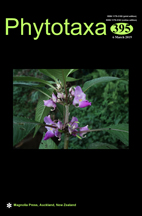Abstract
To better understand the phylogeny of Isoetes species in the Mediterranean region, sequences of the second intron of a LFY-like homolog were determined for six populations of three Mediterranean Isoetes species and analyzed with other LFY and ITS sequences of Euro-Mediterranean species available in GenBank. Nomenclature of selected species was updated according to recent literature. Investigations of voucher specimens from previously sequenced taxa revealed that a specimen of I. histrix from Crete, Greece used in several previous molecular studies is probably I. phrygia. Analysis of the limited LFY and ITS DNA sequence data presented here agrees with the organization of Mediterranean species into three groups as suggested by worldwide phylogenies of the genus: first, an older group, including I. longissima, I. histrix, I. durieui, I. libanotica and similar species in addition to other probably “Laurasian” species; second, an intermediate endemic relict group, including only I. malinverniana and I. anatolica; and third a younger group, including the Mediterranean I. delilei, I. phrygia and I. todaroana, along with the widely-distributed I. echinospora and I. lacustris and other species. Preliminary remarks on the evolution and biogeography of the genus in the Mediterranean region are presented.

